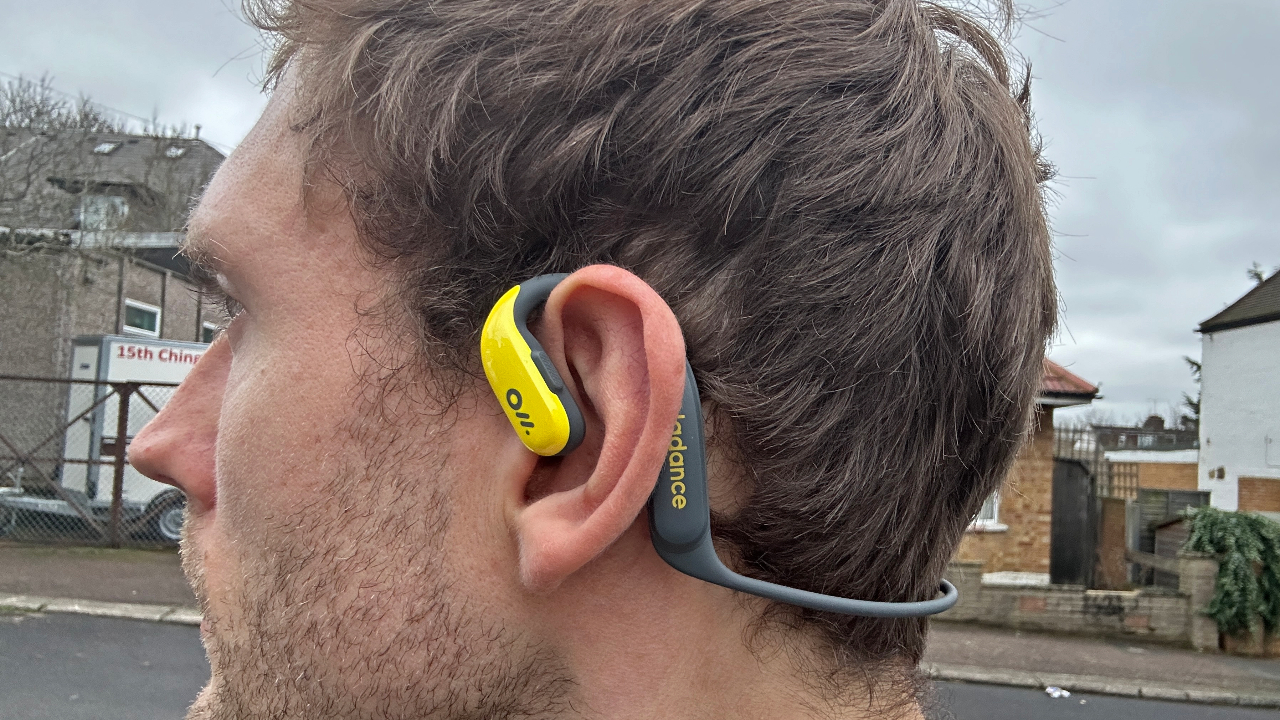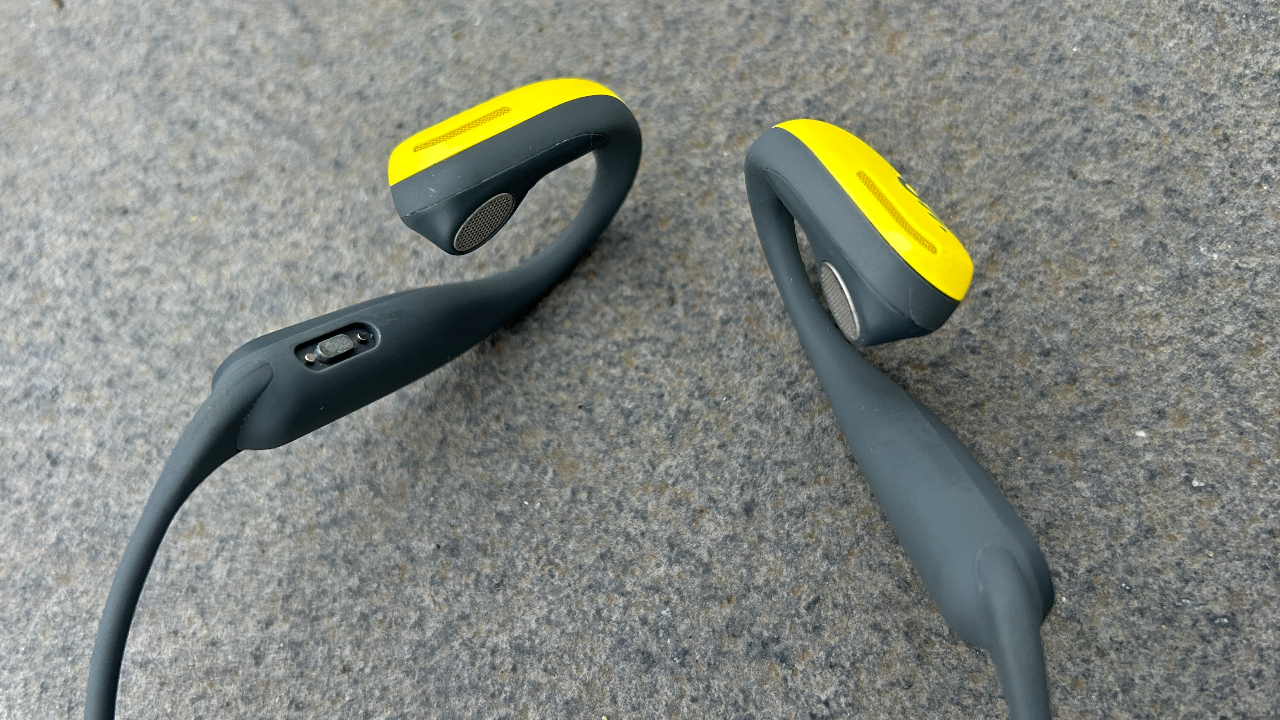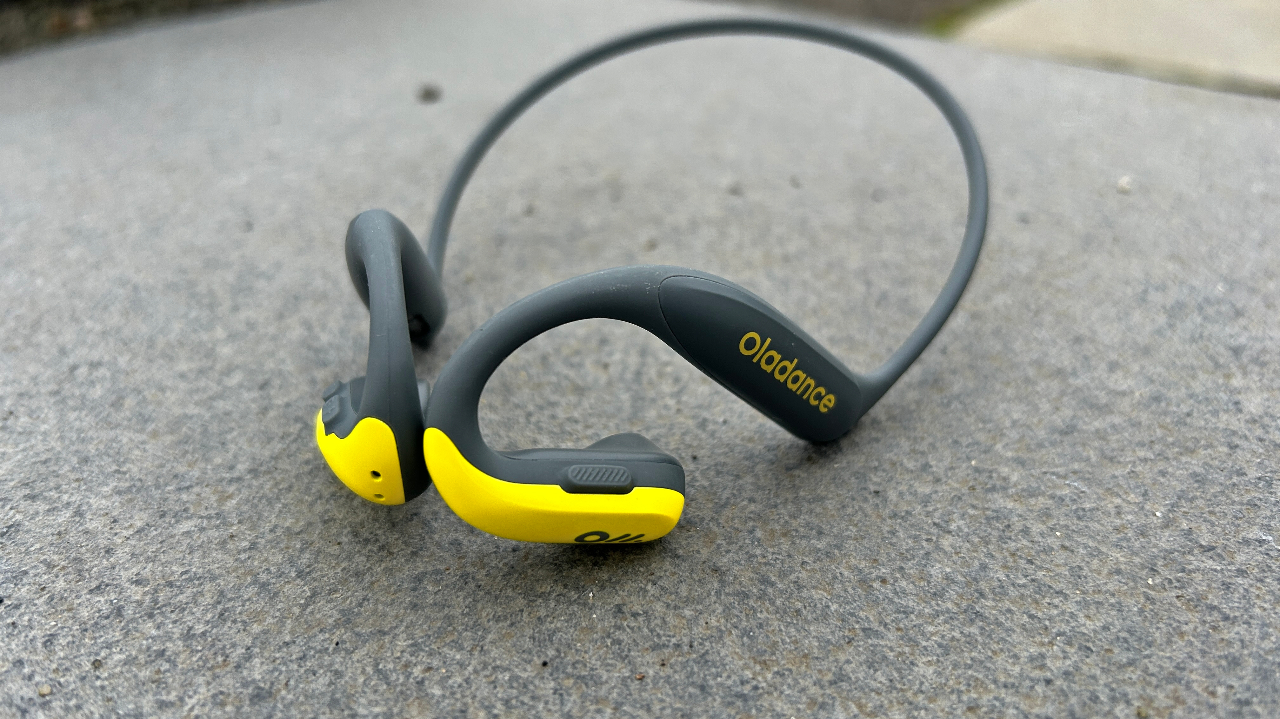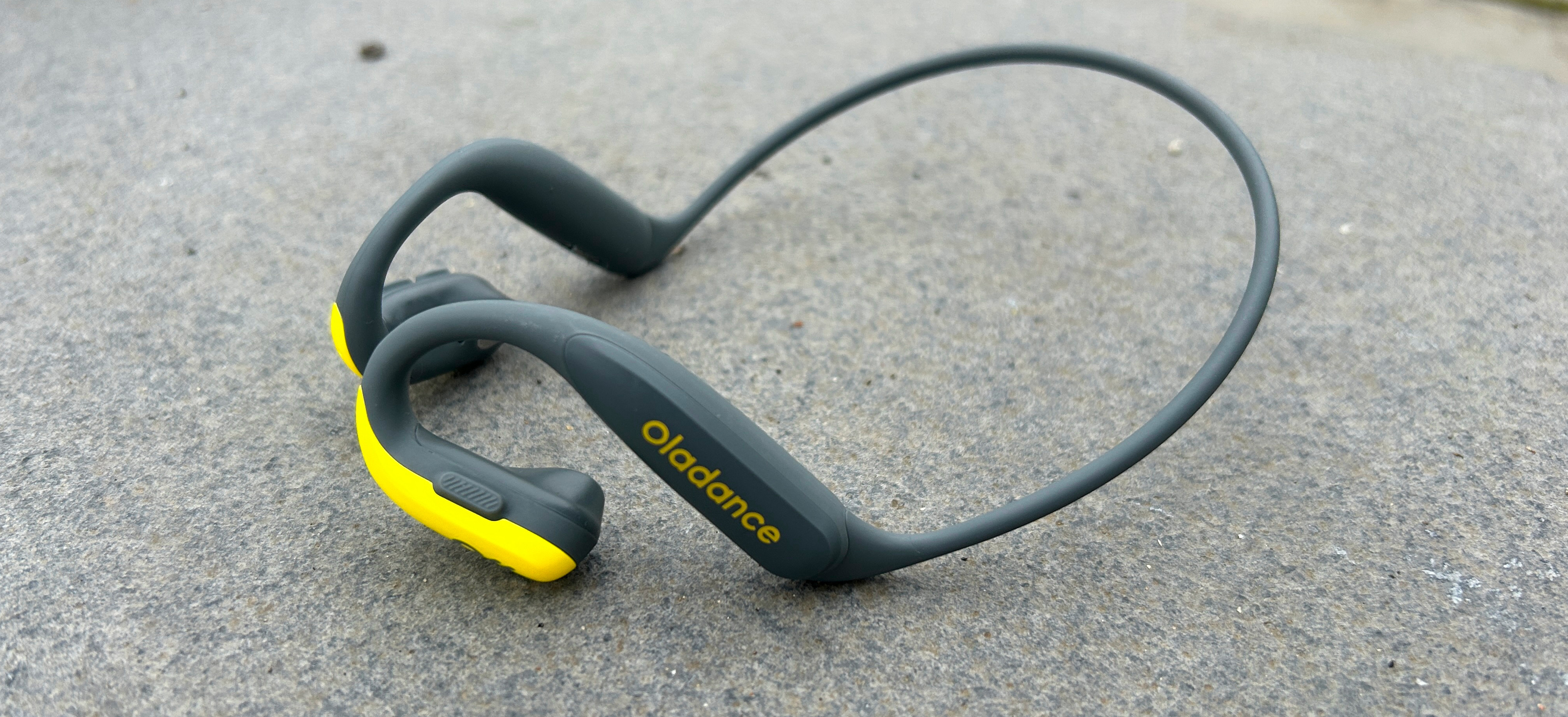Our Verdict
The Oladance OWS Sports sound great, for open headphones, with notably better bass than you get from bone conduction headphones. They offer long battery life and a comfortable, secure fit. However, they’re expensive and still can’t match the sound of in-ear buds, which are better for general use as well as sports.
For
- Good sound quality
- Comfortable and secure fit for sport
- 15-hour battery life
Against
- Cheaper open buds available
- Not great for general use
- Some will prefer wireless buds
You can trust Coach
The Oladance OWS Sports are among the best workout headphones I’ve tested, ticking all the boxes as sports buds thanks to the excellent fit, long battery life, waterproofing and open design, which allows you to stay aware of your surroundings.
For open buds, the sound quality is impressive, even if it’s not as good as the best in-ear headphones. The downsides of open headphones remain, in that they’re not ideal for traveling or general use, and the OWS Sports are expensive for buds you may not want to use all the time.
Oladance OWS Sports: Price And Availability
The Oladance OWS Sports launched in February 2024 and cost $179.99 in the US and £189.99 in the UK. That price is in line with the most expensive open buds like the Shokz OpenFit and Cleer Arc II, but you can get open headphones for much less, such as the 1MORE Fit SE Open Earbuds S30. The Oladance OWS Sports come in four colors: silver, yellow, gray and pink.
How I Tested These Headphones

I’ve been using the OWS Sports headphones on and off for three months, mostly for running and general use. I’ve also tried them during bike rides, strength workouts and yoga sessions. I’ve tested a variety of the best workout headphones, including many open designs, including the Oladance OWS 1.
Design, Controls And Fit
Unlike the other headphones in the Oladance range, the OWS Sports are not individual buds. Instead the headphones are connected by a band that runs around the back of the head. They are light and I found the fit comfortable and secure enough to use the buds for long workouts, as well as throughout the day. However, there are times when it’s convenient to only use one bud to leave an ear clear, or not have the wire running around the back of your head, when truly wireless buds will be a better option.
There’s a speaker on the inside of the buds that sits in your ear just above the ear canal so you can hear your audio clearly while still also being aware of what’s around you. That’s useful when running or cycling outside, or working out in a gym where you might need to hear what others are saying.
The headphones have an IPX8 rating, which means they’re waterproof and will not be troubled by sweat and rain during workouts. They aren’t suitable for swimming, though, unlike some bone conduction headphones like the Shokz OpenSwim.
There is a multifunction button on the left bud to control playback and two buttons on the right, which control the volume and turn the headphones on and off. I found these easy to use during workouts, and more reliable than a touchpanel.
Sound Quality

The improved sound quality from the open design is a big reason to opt for the OWS Sports over bone conduction headphones. The OWS Sports buds don’t let in as much external noise as bone conduction buds (which leave the ears clear), but they sound better, with a fuller sound and much beefier bass.
You can customize the EQ in the Oladance app, which allows you to increase the bass further, and whether you’re using the headphones in a quiet gym or office or on a windy running track, you get loud and clear sound. Oladance says the buds reduce wind noise, and this works to some extent: You will still hear the wind when cycling or running, but it’s not as noticeable as with other open headphones.
I found the buds enjoyable to use for long periods indoors, as well as during workouts, and that’s not the case with bone conduction headphones—I find those don’t have good enough sound quality to use when working out. You’ll still get better sound with passive and active noise cancellation (ANC) from in-ear buds, and for the price of the Oladance OWS Sports you can get excellent headphones like the Jabra Elite 8 Active, which are great for sports and general use. As open headphones, the OWS Sports are also not that great for use on loud trains and planes, when podcasts in particular can be drowned out.
Battery Life

Battery life is a strong point for the OWS Sports, which last 15 hours on a charge (even when using them at high volumes). A quick-charge feature gets you five hours of playback from a 15-minute charge. Since they don’t have a carry case you have to plug the buds in to charge them, and it’s a proprietary cable so you can’t use a generic one if you lose it. Buds that use carry cases that charge them can offer more total battery life, though 15 hours on the headphones themselves is great.
Are The Oladance OWS Sports Worth It?
The OWS Sports headphones are excellent. I prefer them to other open headphones I’ve used for running and workouts, though there are a lot of headphones of similar quality in this category now. The Shokz OpenFit and Cleer Arc II are great options and have individual buds rather than a neckband design, though I found the overall fit of the Oladance buds more comfortable and secure during workouts.
It’s hard for me to say open buds that cost this much are worth it because they aren’t always great to use outside of workouts. The Jabra Elite 8 Active are a similar price, and among the best workout headphones as well, while the Jabra Elite 4 Active are cheaper. They both have an in-ear design and great sound quality and ANC, with a transparency mode that allows for awareness of your surroundings; you can also use one bud at a time.
If you want the extra awareness of open headphones, however, the OWS Sports offer good sound quality. The price is high, though, and there may be better value in getting a cheaper set of open buds like the 1MORE Fit SE Open Earbuds S30—which still sound pretty good—for your workouts and an in-ear set for general use.

Nick Harris-Fry is a journalist who has been covering health and fitness since 2015. Nick is an avid runner, covering 70-110km a week, which gives him ample opportunity to test a wide range of running shoes and running gear. He is also the chief tester for fitness trackers and running watches, treadmills and exercise bikes, and workout headphones.

